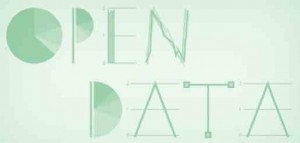The concept and the impact of Open Data are already visible in science and business fields in the construction of a new civil society.
Etymogically the term Data is derived from the Latin dare meaning ‘to give’. In this sense as suggested Rob Kitchin, data refer to those elements that are taken and extracted in order to define or observe a specific phenomenon.
Strictly speaking, the data are seen as a series of ‘units of truth ‘or ‘unit of knowledge’ for this reason, it represents a complex socio-technical assemblage.
The spirit of Open Data movement consists of the idea that data should be freely available to everyone, regardless of who they are or how they want to use it without restrictions from copyright and other mechanisms of control.
The digital information given by Open Data about a determinate topic for example transport, education, legislation or business permit people to use it, re-use it and redistribute it including intermixing with other datasets and distributing the results.
Generally, the key aspects of Open Data can be summarized in three points: availability and access, re-use and redistribution and universal participation to data.
However, in order to use the data in this modality, it has to be released in a format that will allow people to share it and combine it with other data to use it in their own applications. This is why transparency isn’t just about access to data, but also making sure that it is released in an open, reusable format.
In business, big data are providing a new means to manage in an efficient and dynamic way all the aspects of a company’s activities and to leverage additional profit through enhanced productivity and market knowledge.
Gradually, several Governments are sharing information with international partners and are exchanging knowledge on respective national open data policies.
Openness about what the government does and how it spends the public resources, is absolutely crucial to the proper functioning of an open and democratic society.
It’s important for the government to release data it holds, such as information on where money is spent and how well public services are performing. Not only does this let people hold government to account, but it can also help to improve efficiency, give people choice in using public services and contribute to economic growth.
In addition, citizens and non-government organizations through the examination of open datasets can draw their own conclusions and create an alternative vision of how society should be organized and managed.
Italy promoted a number of open data activities both at national and local level and collected it in the ‘Italian Action Plan’. In June 2013, the Plan was drafted by Department for Public Administration in cooperation with the Agency for Digital Italy (AGID) in order to share the information about the quality and efficiency of public services and national policies making government`s decisions more transparent.
In this type of activity are involved at a local level the public administration of several Italian Regions and various civil society groups such as ‘Spaghettiopendata’ (a vivid community debating the status of initiatives around open data in Italy and occasionally organizing events); the Italian Association for Open Government; Linked Open Data Italy3, Stati Generali dell’innovazione4, Wikitalia (which is also committed to raising funds and tutoring local administrations for civic hacking projects).
At the moment, from the legal point of view the article 9 of the decree-law no 179/2012 defines the legislative framework that enhances access to and reuse of Public Sector Information (PSI).
Apart from their political uses, in the immigration field open available data are provided online by the Italian Institute of Statistics. Officials statistics on migration flows are based on the administrative sources and include information on the main socio-demographic characteristics of migrants and draft the number of asylum and citizenship applicants.
The consultation of these Open Data could be useful for planning actions, monitoring and evaluating programmers in order to harmonize common immigration policies and estimate the future trends of migrant movements in Italy.
Moreover, an interesting Open Data initiatives are promoted by the National Archives of New York City regarding the immigration field in order to help ancestry and genealogical researches on Italian immigrants in USA during the period 1820- 1957. Indeed, the site contains an extensive searchable database of Passenger Lists of Vessels Arriving at New York and provides information including age, sex, literacy, occupation, country of origin, port of embarkation, date of arrival into the city and ship`s name.
Paola Deepa Spagnulo
Intern – Digital Innovation at Immigration


